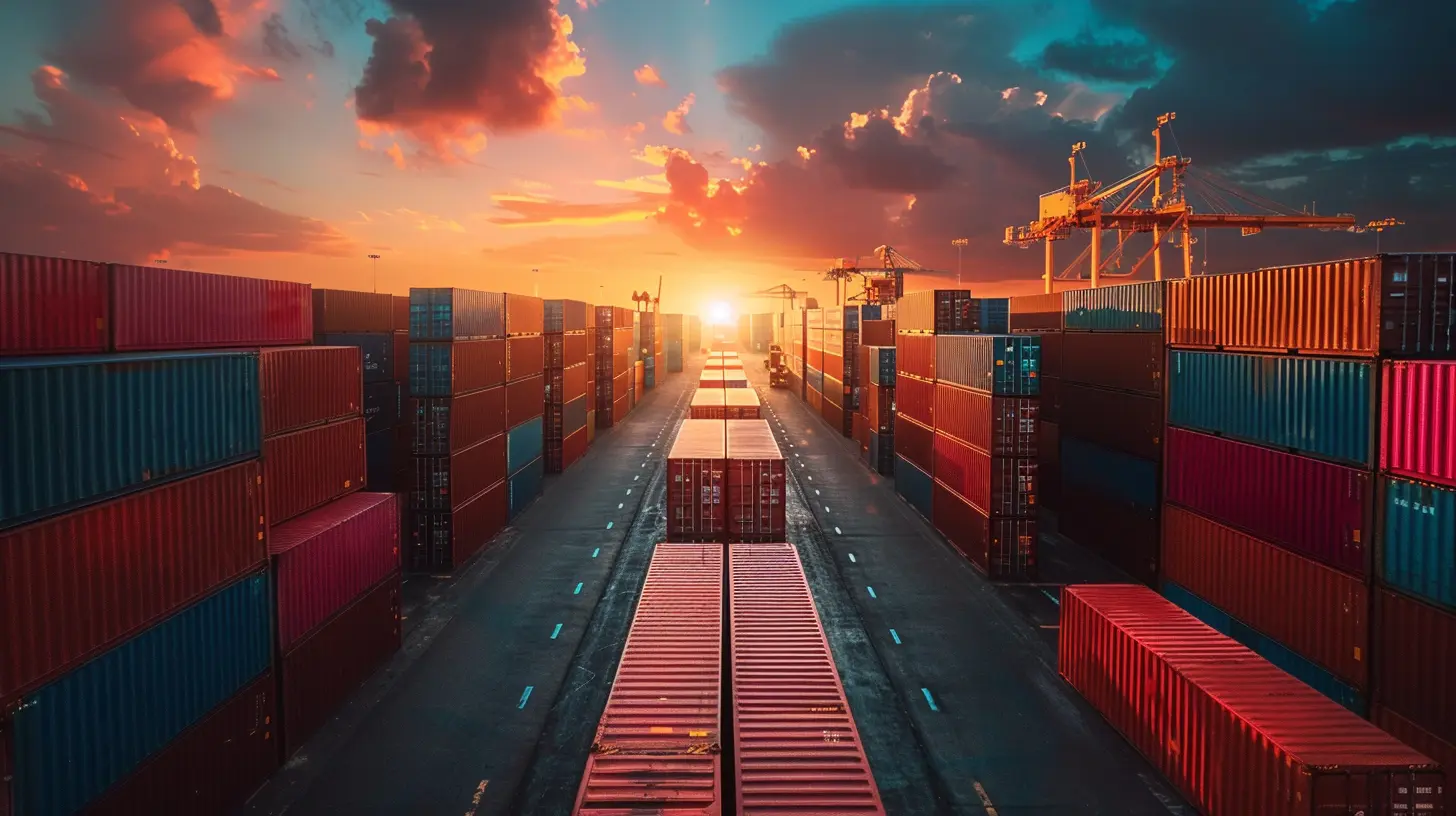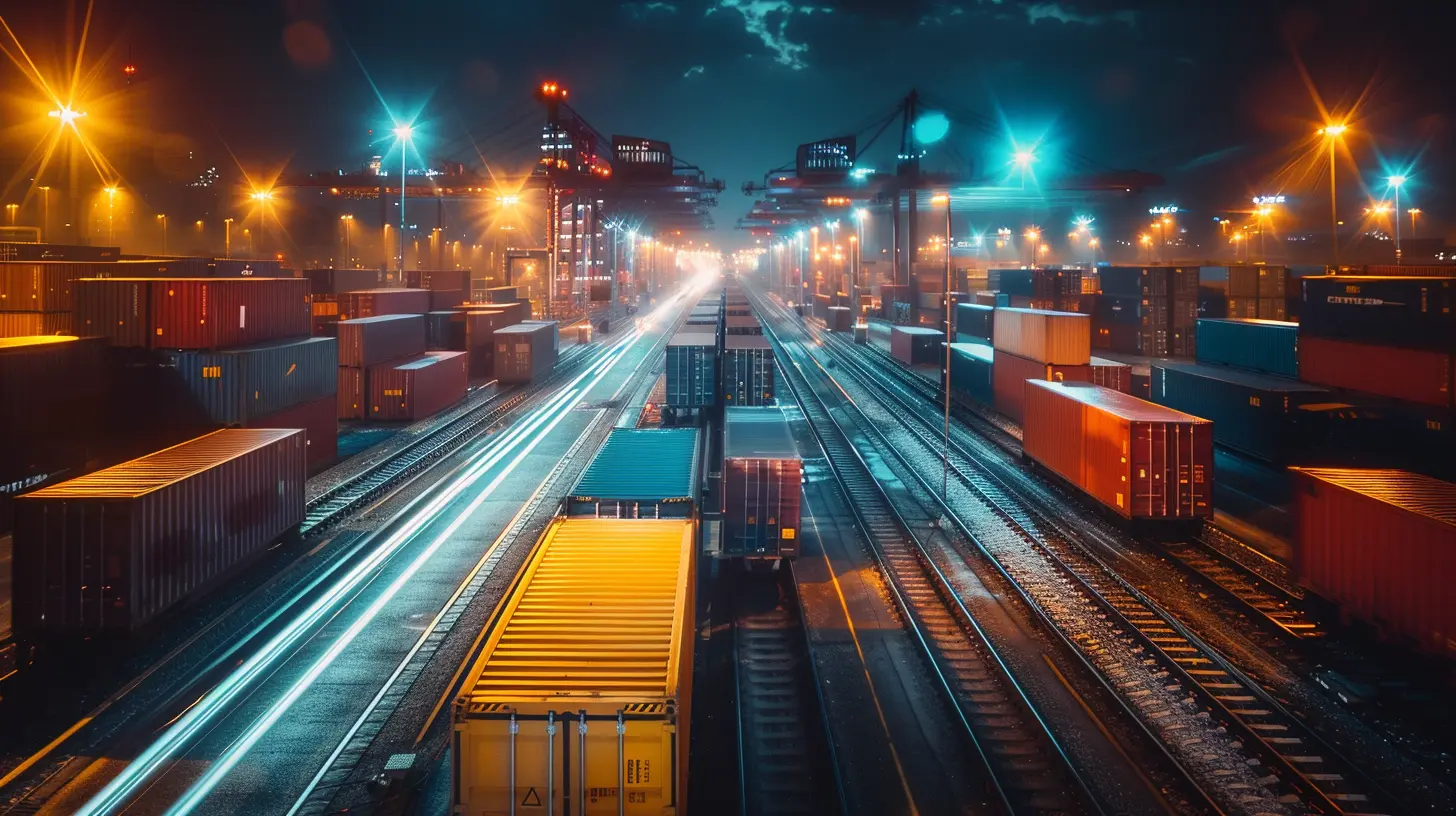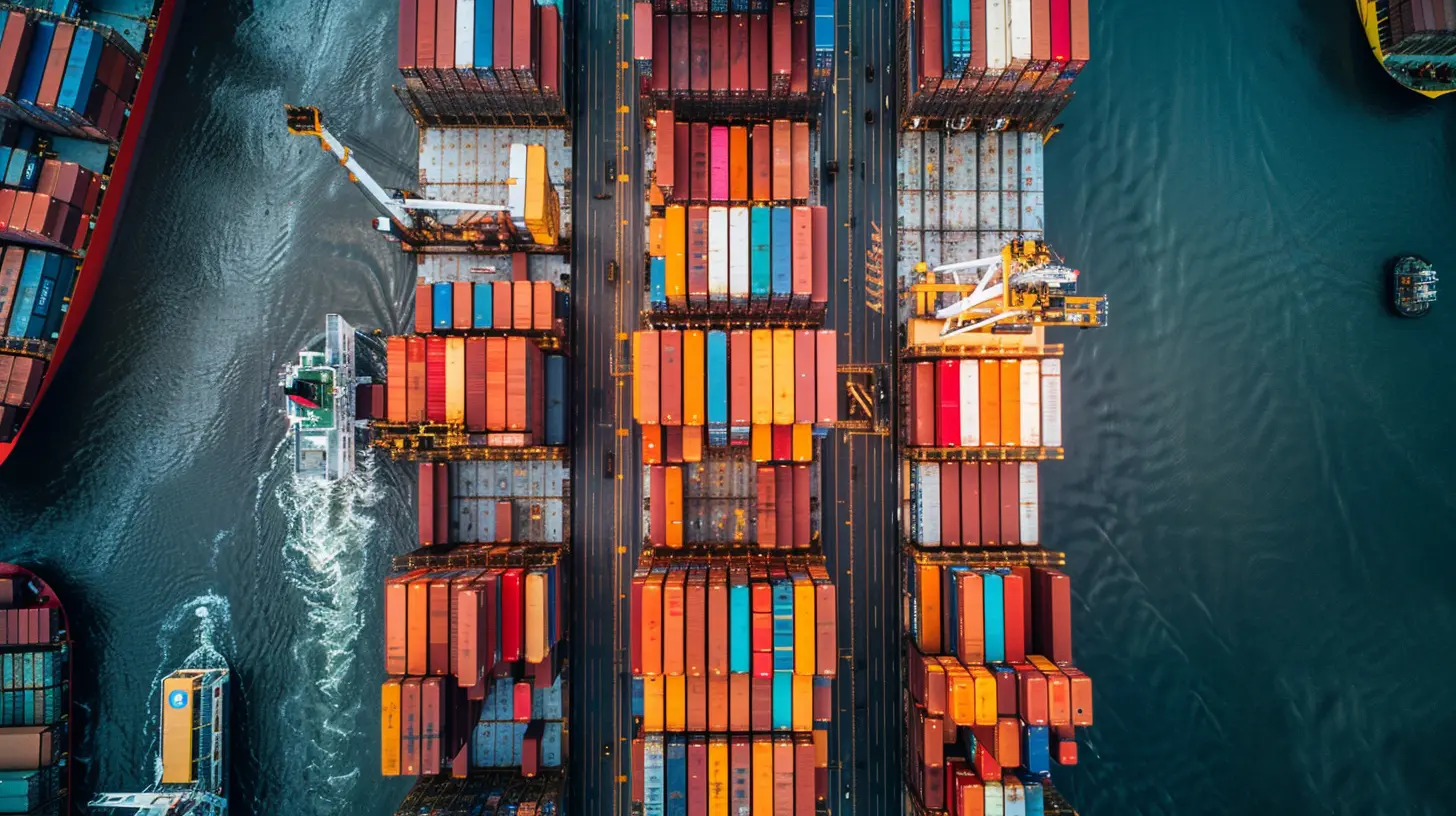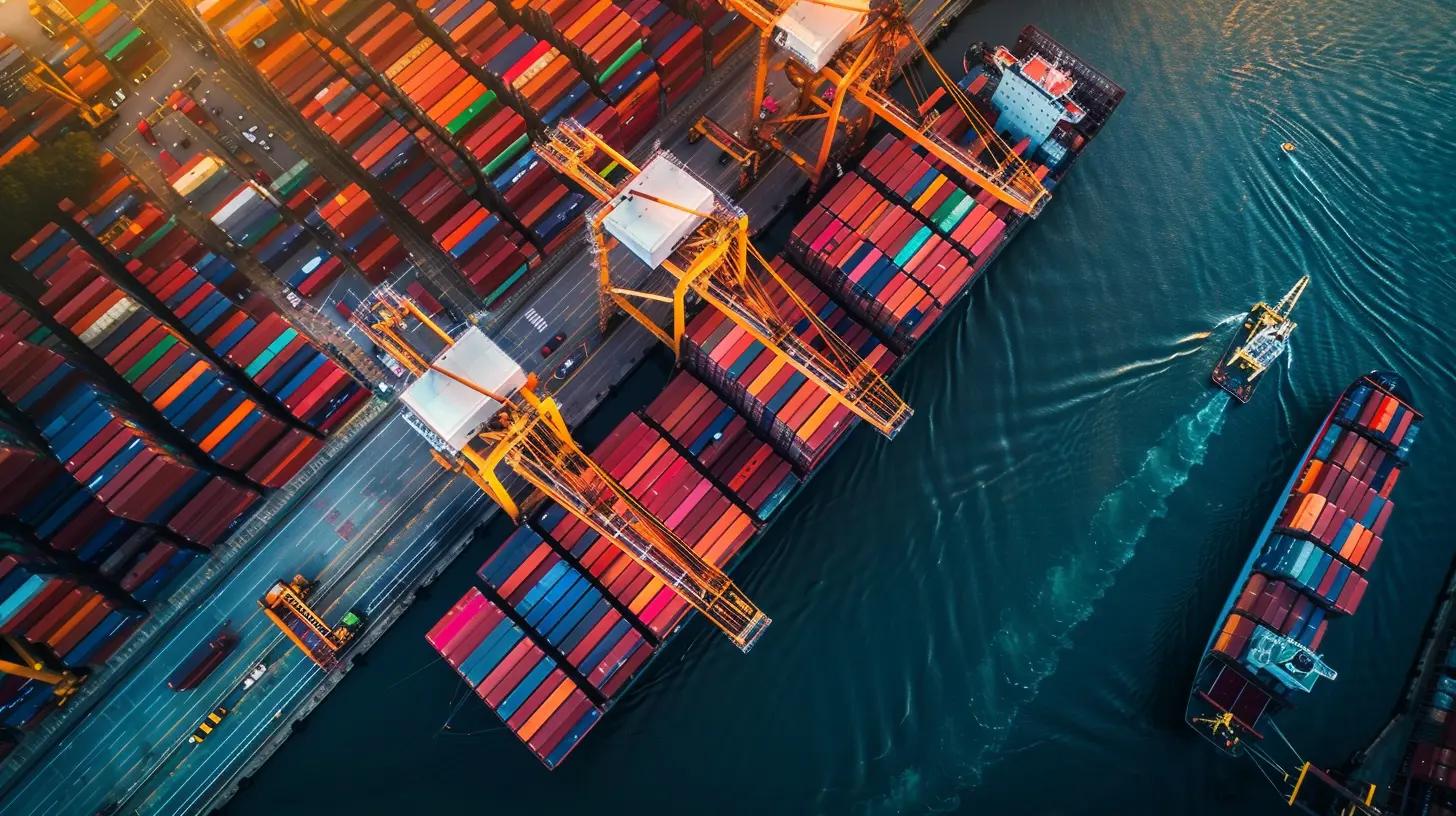Disruption in the Supply Chain: What You Need to Know to Stay Competitive
17 July 2025
If there’s one thing we’ve learned over the past few years, it’s this: supply chains aren’t invincible. From global pandemics to political tensions, and even ships getting stuck in canals (yes, we’re looking at you, Ever Given), disruptions in the supply chain have become the norm rather than the exception.
So, how do you stay competitive when the world seems to constantly throw curveballs at your supply chain? Buckle up, because we’re diving deep into what’s going wrong, why it matters, and most importantly—what you can do about it.
What Is Supply Chain Disruption?
Let’s keep it simple: A supply chain disruption is any event that breaks or slows down the normal flow of goods and services. This could mean raw materials can’t get to the factory, production gets delayed, shipments don't arrive on time, or prices shoot through the roof.Think of the supply chain like a relay race. One hiccup, and the baton doesn’t make it to the next runner. That delay? It affects the entire race. And in business, the "race" is your ability to deliver products and services efficiently.
Causes of Supply Chain Disruptions
It’s not just one thing causing these disruptions. It’s like a perfect storm of problems. Here are the big culprits:1. Global Pandemics
COVID-19 didn’t just change how we work—it flipped entire supply chains on their heads. Factories closed, ports jammed up, and labor shortages became a global issue. And even today, we’re still seeing ripple effects.2. Political Instability and Trade Wars
Remember the US-China trade war? Tariffs and import restrictions left many businesses scrambling. Then there’s Brexit, Russian sanctions, and more. Politics can (and often does) directly influence how smoothly your supply chain runs.3. Natural Disasters
Floods, hurricanes, wildfires... nature has a way of reminding us who's boss. These events can destroy infrastructure, delay deliveries, and jack up costs overnight.4. Cybersecurity Threats
As supply chains become more digitized, they also become more vulnerable. A single cyberattack can paralyze operations across continents.5. Transportation Bottlenecks
Ever seen a traffic jam at a port? Cargo ships and delivery trucks getting stuck can delay entire shipments. And with today’s tight delivery timelines, even a small delay can have a massive ripple effect.
Why Disruption Matters More Than Ever
Let’s be real—customers today are not very patient. We live in a “next-day delivery” world where speed and transparency are everything. If your business can’t meet deadlines, someone else will.Loss of Revenue
Every delay and every stockout translates into lost sales. Even worse? Customers may not come back.Damaged Brand Reputation
One too many “We’re experiencing delays due to supply chain issues” emails and you’ll quickly find yourself labeled unreliable.Increased Costs
Expedited shipping, new suppliers, rerouted logistics… disruptions often lead to bloated budgets.In short, a broken supply chain doesn’t just hurt your backend—it hurts your entire business.
How to Stay Competitive During Supply Chain Chaos
Here’s the good news: while you can’t always avoid disruptions, you can definitely soften the blow. Think of it like building a shock-absorber for your business.1. Embrace Supply Chain Visibility
You can’t fix what you can’t see. Use real-time tracking systems and analytics tools to monitor every inch of your supply chain. Knowing where your products are (and where bottlenecks might occur) allows you to pivot fast.2. Diversify Your Supplier Base
Relying on one supplier is like putting all your eggs in a single basket. What if that basket falls? Consider sourcing from multiple regions to reduce your exposure to risk.3. Build Strategic Inventory Buffers
No one likes sitting on excess inventory. But a little buffer stock? It can be a lifesaver during disruptions. It’s all about balance—not too much to hurt your cash flow, but enough to keep customers happy.4. Leverage Predictive Analytics
AI and machine learning aren’t just tech buzzwords—they’re game changers. They help forecast demand, identify risk factors, and give you a heads-up before problems escalate.5. Strengthen Relationships with Partners
Your suppliers, logistics providers, and even customers—strong communication here is key. When disruptions happen, the companies with solid relationships fare better than those that treat partners like faceless vendors.6. Go Local (When It Makes Sense)
Think about reshoring or nearshoring part of your operations. Why ship from halfway across the world if you can get similar quality closer to home? Fewer miles = fewer risks.7. Invest in Automation and Robotics
Warehouses that rely heavily on manual labor are more prone to downtime. Automation tools not only streamline operations but also reduce dependency on inconsistent labor markets.Case Study: What Went Down in 2021
Let’s take a quick look back.Remember the semiconductor shortage? It slapped the auto industry hard. Cars sat unfinished on factory lines waiting for chips. Companies like Ford and GM had to halt production. All because one tiny component was missing.
Now imagine if they had diversified their suppliers or kept stock of critical parts. Could’ve been a different story, right?
The Role of Technology in Navigating Supply Chain Issues
Tech is the not-so-secret weapon in winning the supply chain war. Let’s break down how:Blockchain for Transparency
Blockchain isn’t just about crypto. In supply chains, it acts like a digital ledger, showing where products are, where they’ve been, and who touched them. Super useful in industries like food, fashion, and pharmaceuticals.Internet of Things (IoT)
Think of IoT as tiny sensors that track everything—from truck locations to temperature in storage units. One glitch? You’ll know it instantly.Cloud-Based Tools
Collaborative platforms keep everyone in the loop—procurement, warehousing, logistics—all singing the same tune in real time.Building a Resilient Supply Chain: It’s Not Just Optional Anymore
Resilience isn’t about being indestructible. It’s about bouncing back fast.To stay competitive, companies need a proactive mindset. You can’t just wait until things break—you have to design your supply chain assuming they will.
Let’s compare it to driving. You can’t predict every pothole, but if your car has good suspension, you’ll ride it out smoothly. Your supply chain needs that same kind of flexibility.
Future-Proofing Your Supply Chain
Nobody has a crystal ball, but we do have trends and data to point us in the right direction. Here’s how you can future-proof your operations:1. Focus on Sustainability
Eco-friendly supply chains aren’t just good for the planet—they’re becoming a requirement. Think energy-efficient transport, reduced packaging, and ethical sourcing.2. Stay Adaptive
Markets shift. Consumer preferences change. Your supply chain should be nimble enough to adjust without a complete overhaul.3. Train Your People
Tech is great, but human talent still matters. Invest in upskilling your team so they’re ready to handle advanced tools and unpredictable challenges.4. Monitor Regulatory Changes
Stay in the loop on tariffs, trade policies, and compliance standards. What’s legal today might not be tomorrow.Final Thoughts
Disruption in the supply chain isn’t going away. If anything, it’s becoming the new normal. But instead of seeing it as a threat, treat it as your wake-up call.The businesses that will thrive are the ones that think ahead, stay flexible, and adopt tools and practices that keep them one step ahead. So, don’t wait until the next crisis hits—start building a smarter, more resilient supply chain today.
And hey, when the next big shipping delay makes headlines, you’ll be the one saying, “We’re good—we planned for this.
all images in this post were generated using AI tools
Category:
Industry DisruptionAuthor:

Susanna Erickson
Discussion
rate this article
2 comments
Payton Williams
Great insights on navigating supply chain disruptions! Staying informed and adaptable is crucial for maintaining competitiveness in today’s ever-changing market. Thank you!
November 23, 2025 at 6:00 AM

Susanna Erickson
Thank you for your feedback! I'm glad you found the insights helpful for navigating supply chain challenges. Staying adaptable is indeed key!
Mia Pope
This article effectively highlights the critical impact of supply chain disruptions on competitiveness. It emphasizes the importance of adaptability, technology integration, and strategic partnerships. Companies must proactively assess their supply chains, invest in resilience, and leverage data analytics to anticipate challenges and seize opportunities for growth in a volatile market.
July 27, 2025 at 10:58 AM

Susanna Erickson
Thank you for your insightful comment! I'm glad you found the article highlights valuable for navigating supply chain disruptions. Adapting and leveraging technology are indeed crucial for maintaining competitiveness.


